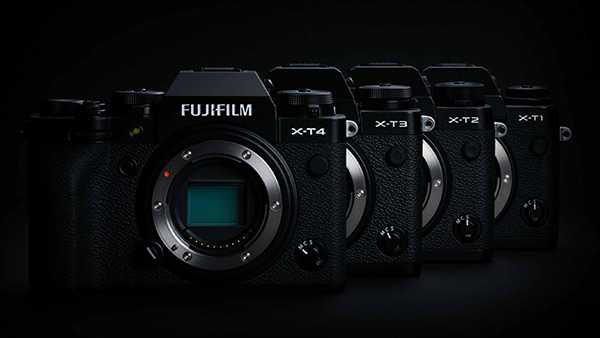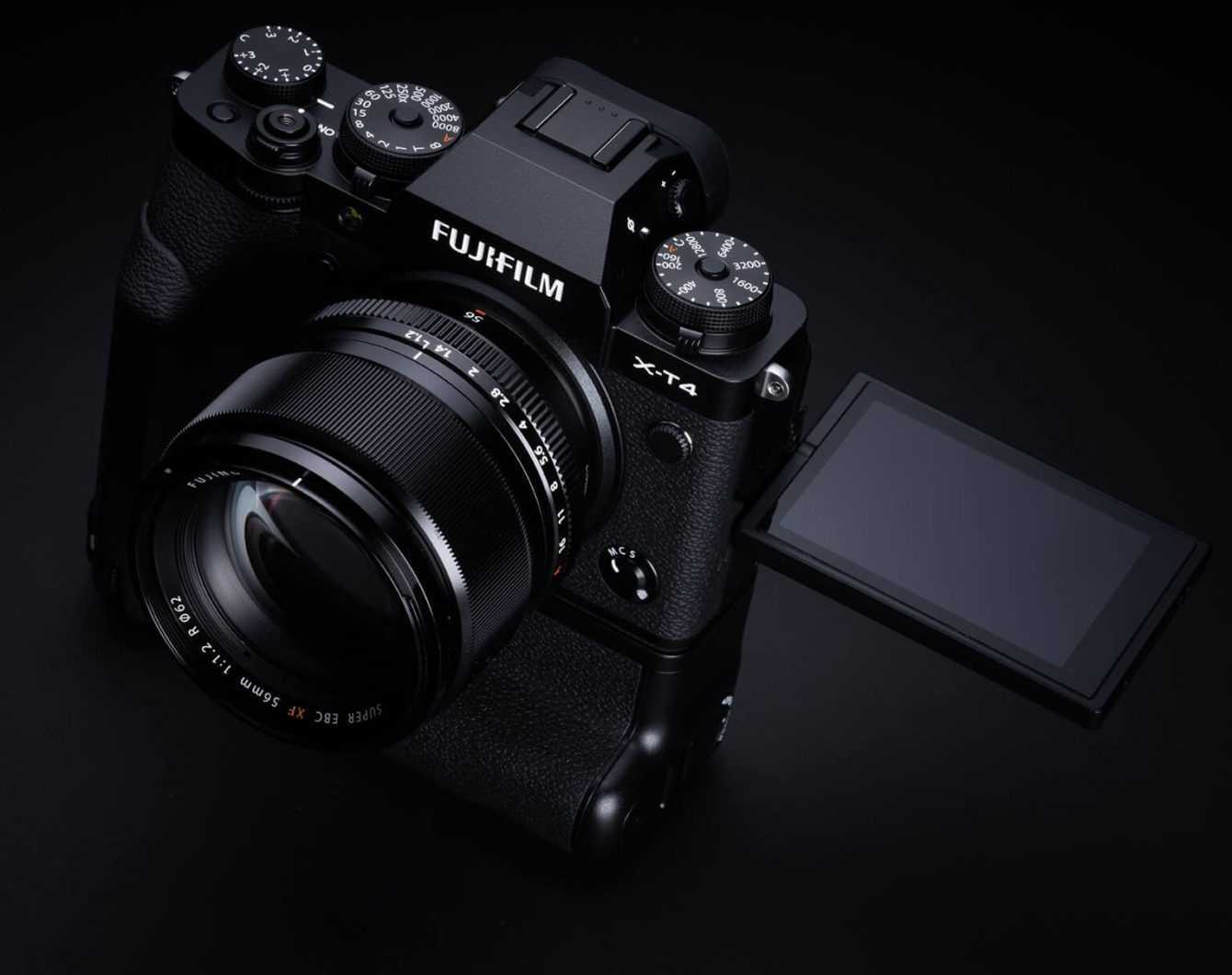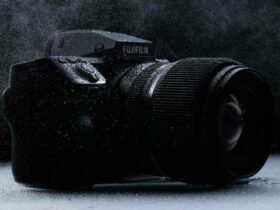Fujifilm is one of the historical camera manufacturers and its X series has accustomed us to exceptional products over time. In the review of Fujifilm X-T4 we will see the new peaks reached by the APS-C format, thanks to this new camera of the Japanese company
We are faced with a machine that unites the best of X-T3 to the functionality of the previous X-H1. Fujifilm with X-T4 offers us a light camera, very satisfying to use and with a purely professional heart. Fujifilm X-T4 is the second camera in the Fujifilm X series to offer the on-sensor stabilizer, which makes it perfect in combination with the non-stabilized fixed lenses that make up the Fujifilm range. For this review we tried the Fujifilm X-T4 in combination with the Fujifilm XF 10-24mm f / 4 R OIS and Fujifilm XF 50mm f / 2 R WR lenses.
Technical features | Fujifilm X-T4 review
The Fujifilm X-T4 is a 26.1 megapixels APS-C (1.5x) sensor mirrorless camera manufactured from 2020. The sensitivity range, including extension, is ISO 80 – 51200 and can shoot in bursts of 20 FPS x 36 RAW, 79 JPEG. The detailed specifications are as follows:
- Sensor Format: APS-C
- Resolution: 26.1 Mpx
- ISO sensitivity: 80-51200 (including extension)
- File formats: RAW, JPG
- Shutter speeds: 15 ‘- 1/32000
- Exposure Compensation: +/- 5 stops
- Exposure mode: M, S, A, P, Scene
- Types of light meters: Multi-Area, Semi-Spot, Spot
- Mount: Fujifilm X
- Stabilization: Yes
- Autofocus (n. Aree AF): 425
- Live View: Si
- Anti-dust: Yes
- Modalità video: 4k @ 30fps + mod 4k 60p
- WiFi: Yes
- GPS: No
- USB: Si – Type-C
- Touchscreen: Yes
- Display: 3.0 ″, 1024 x 680 pixels, articulated
- Viewfinder: Electronic, coverage 100%, 0.75x, 1280 x 960 px
- Built-in Flash: No
- Memory: SD, SDHC, SDXC (UHS-II) (double Slot)
- Shutter: Mechanical and Electronic
- Battery: Li-Ion. Fujifilm NP-W235
- Film simulation: 18 modes (PROVIA / Standard, Velvia / Vivid, ASTIA / Soft, Classic Chrome, PRO Neg.Hi, PRO Neg.Std,
Monochrome, Monochrome + Y Filter, Monochrome + R Filter, Monochrome + G Filter, Sepia, ACROS,
ACROS + Y filter, ACROS + R filter, ACROS + G filter, ETERNA / Cinema, Classic Neg, ETERNA BLEACH BYPASS)
Monochromatic Color
Camera body | Fujifilm X-T4 review
Fujifilm X-T4 is a professional camera body. This is the evolution of X-T3 that also incorporates everything that the house had introduced with X-H1 but not only. In a small, very manageable body, we will have every command available in an instant. Each button is then customizable: what more could you ask for? The double slot, the tropicalization, the extreme attention to detail and the fully articulated display (even better than X-H1). As soon as it is picked up, a premium sensation is immediately felt, however (those with big hands) feel a little lack of support for the little finger. Not bad, there is a nice battery grip that will make up for this lack, as well as the lack of the dedicated headphone jack. The body is therefore a fantastic middle ground between the previous X-Tx and X-H1: really not bad.
The touchscreen has been implemented in a very efficient way, giving the world to access quick commands via gestures, such as the histogram or the level (all however customizable). Or, by pressing, the touch display allows you to focus or even take a photo. Browsing the photos you take benefits greatly from the touch on the screen, for one really quick handling regardless of pressing other keys. Everything as per the textbook, as Fujifilm has always accustomed us to.
As anticipated in short, Fujifilm X-t4 is a camera resistant to dust, humidity and low temperatures. Above, there are 5 rings. The two upper ones are used to manage times and ISO and can be locked and unlocked if necessary, the one at the body level manages exposure compensation. The lower rings, on the other hand, are used to manage the type of exposure area and to switch between photos and videos. If this is not enough, there are also two other classic type rings that allow you to choose the other parameters according to how you set up the machine.

This is combined with the choice of aperture on the lenses, typical of the Fuji X system. If this is not enough, the two aforementioned dials, if pressed, act as an extra button that can also be customized with the function that suits you best. The back is very classic and therefore extremely functional. Noteworthy is the great shutter button quality that surpasses even the X-H1. The connection via Bluetooth and Wi-Fi Direct is very useful, which allows the camera to connect to the phone and be managed by the latter as well as quickly sending photos to the smartphone. The news, however, does not end here. The most interesting point concerns the battery and consequently the autonomy. The new Fujifilm NP-W235 guarantees record autonomy, the machine in our tests never left us on foot: even in a shooting that lasted several hours, which consumed as many as 2 64GB cards, we managed to drop just below 2 notches. The only drawback? The charger which, although Type-C, necessarily charges the battery when it is connected to the machine. We will have appreciated a separate wall charger in addition to the one already supplied.
The stabilizer | Fujifilm X-T4 review
If on the one hand we always have the APS-C X-Trans CMOS IV sensor on X-T4, the real news is il sistema in-body image stabilization (IBIS) of new design that declares on 18 of the 29 lenses of the system as many as 6.5 stops of stabilization and an accuracy higher than 8 times compared to X-H1. All this, in the field, translates into a more effective and less noisy stabilization system which, especially in video, manages to offer the best of itself. As we said for X-H1, the blur will never be the fault of the camera but of the photographer who, in some cases, will have made a mistake in setting the shutter speed for moving subjects!
Focus, Burst and Shutter System | Fujifilm X-T4 review
The autofocus on board of X-T4 turns out to be an improved version of what was seen on X-T3. We have 425 focus points which, thanks to the evolution of the management software and the enhancement to the processor that manages the focus, presents truly incredible performance and never seen before on the X series. In practical use we have never found no problem, however we managed to put the system in trouble with gusts where we quickly walked towards the camera. Except for this evidence in an artificially created condition, the only uncertainties we encountered manifested themselves in video on multiple subjects (you will find the offending clip below). As we were used to from previous models, we have the most electronic mechanical double shutter. The operating modes are as usual:
- Mechanical shutter
- Electronic shutter
- Electronically controlled first curtain
- Mechanical + electronic shutter
- Mechanical shutter + Electronically controlled first curtain
The mode we recommend you use is “Mechanical + electronic shutter” in order to use the mechanical shutter for the “longer” times and the electronic shutter for the shorter times than 1/8000 and thus have all the advantages in terms of functionality offered.
Video Features | Fujifilm X-T4 review
Fujifilm X-T4 has a very solid video part. Here are the video specifications of the camera:
- Video formats:
- MOV (MPEG-4 AVC/H.264, HEVC/H.265 Audio: Linear PCM / campionamento Stereo 24bit / 48KHz)
- MP4 (MPEG-4 AVC/H.264, Audio: AAC)
- Movie compression
- File size
- [DCI 4K(4096 x 2160)] 59.94p/50p/29.97p/25p/24p/23.98p 400Mbps/200Mbps/100Mbps 59.94p/50p: fino a circa 20min. 29
- [4K(3840 x 2160)] 59.94p / 50p / 29.97p / 25p / 24p / 23.98p 400Mbps / 200Mbps / 100Mbps 59.94p / 50p: up to approx.20min. 29.97p / 25p / 24p / 23.98p: up to approx.30min
- [Full HD(2048 x 1080)] 59.94p/50p/29.97p/25p/24p/23.98p 200Mbps/100Mbps/50Mbps fino a circa 30min.
- [Full HD(1920 x 1080)] 59.94p/50p/29.97p/25p/24p/23.98p 200Mbps/100Mbps/50Mbps fino a circa 30min.
- [Full HD(1920 x 1080) High Speed rec.]
- 240p / 200p 200Mbps (recording) up to approx.3min.
- 120p / 100p 200Mbps (recording) up to approx.6min.
This video sector is then accompanied by the ETERNA film simulation and F-log. The Eternal simulation, expressly designed for video, returns an extremely workable file and has been our favorite choice on all occasions for ease of use. Clearly it is not a log and in the video that we show below you can see it in some clips where the highlights are “lost”. The fault, however, is not to be found in the camera but in ourselves who, given the particularly dynamic recording situation and the short time to manage the parameters in the context, we relied on the camera for the choice of sensitivity. Using F-log we would definitely have avoided burning the lights in those clips. In fact, the F-log file is suitable for these shots that need the maximum in terms of dynamic range. A file recorded in F-Log is extremely flat and with a large amount of information, especially thanks to the new containers at 400 and 500mbs. The stabilizer in videos does its job well; the updates and the best present compared to X-H1 are all seen. Here too we are not at the level of an external stabilizer, but we reach a new peak compared to what we have seen in the past.
We leave to you the judgment on the final quality of the video obtained, in our case, exclusively through the Eterna – Cinema film simulation (which we reiterate is in our opinion the best compromise between practicality and final quality). Finally, we underline a last aspect very often ignored: the internal microphone. As you can see in the initial clips of the video, the recorded audio is one quality surprising for a built-in microphone in the body. Even in more difficult conditions (see wind and background noise) these still give an excellent result, certainly superior to the competition.
IQ Analysis | Fujifilm X-T4 review
The APS-C format is currently the most used by photographers with interchangeable lens cameras. The two criticalities of this format, compared to Full Frame and Medium Format, are the yield at high ISO and the incidence of diffraction in the photos. We had already analyzed the previous generation X-Trans sensor in a purely numerical and analytical way, arriving at very satisfactory results. With X-T4 we are at an even higher level than in the past, with amazing performance compared to the competition of the same format. Needless to hide behind a finger, in the APS-C panorama the Fujifilm sensor is the best currently on the market. We leave you the RAW of some shots at different ISO sensitivities to also show you the further progress in the noise management of this 26.1 MPX sensor. To you the evaluations, objectively the result between ISO 160 (new base sensitivity lowered compared to the ISO 200 of the previous generation) and ISO 12800 is truly amazing.
Field test | Fujifilm X-T4 review
After studying the machine for a few days and becoming familiar with all its functions, we organized our test outings in order to cover all genres by involving a group of musicians for a portrait session. In particular we have addressed these genres:
- Natural landscape and …















